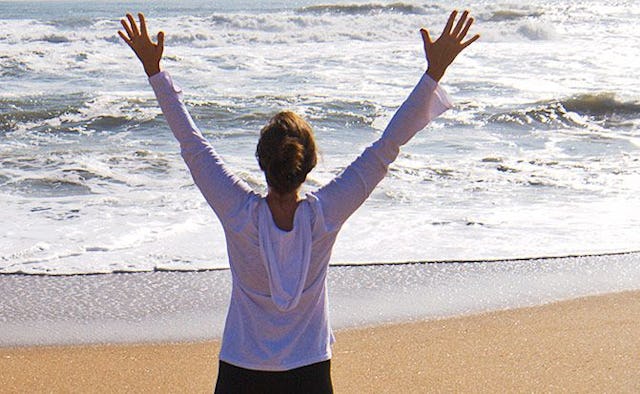Does a Woman’s 'Second Prime' Begin at 40?

Growing up in Russia in the 1980s I often heard my mother and her friends swear by what they referred to as old-age wisdom: “second prime for a woman begins at forty.” A contemptuous teen, I rolled my eyes and attributed such irrational thinking to too many hours spent in lines. Their primes couldn’t begin anew at forty, I thought. They all worked at least three jobs. They built five-year plans during the day, traversed Moscow for toilet paper and chicken on lunch breaks, and then fried that chicken while simultaneously tending to their demanding husbands and children at night. By the time my thirty-something mother and her friends reached forty, I believed, the only second prime they could look forward to was a life devoid of parent-teacher meetings and long lines for deficit list items. That is, if they managed to build the Communism they were promised.
Then I grew up. The USSR collapsed, and Soviet communism along with it. We moved to the United States, where my mother continued to serve chicken for dinner, although this time without waiting in line for it—she bought it already grilled at the supermarket. My mother was now in her mid-forties and, much as I looked, I couldn’t see the famed “second prime” anywhere. Sure, she no longer had to elbow-fight World War II-withered babushkas in line for toilet paper or grease my teachers’ palms, but her laugh lines ran deep, her midsection called for a tankini or a one piece, and her trips to a colorist were no longer a folly. To me she didn’t seem particularly aurora-like.
By the time I reached 40 I’d forgotten about the second prime legend. My own daughter was entering the tween stage, and when I wasn’t checking her schoolwork or arguing over the mayhem in her room, I was paying orthodontic bills. The second prime seemed as far removed from the reality of my life as those bills were from the realities of the American middle class.
But then, somewhere between 42 and 43, I began to notice a shift. The worries that used to bring on migraines had disappeared, or at least lessened in intensity. The doubts that turned me into an insomniac had ceded territory to the belief that things would work out no matter what. And the fervor with which I plowed into righteous altercations had diminished to micronewton levels.
It wasn’t that I was becoming apathetic, disinterested, or Pollyannaish. I still cared and I still worried—but I cared and worried selectively. I now gave zero fucks over things I couldn’t control and reserved the fucks I saved for things that truly mattered. I got really good at avoiding drama and eliminating toxic people from my social circle. My friendship list shrank, but the amount of fun I had with those still on the list increased exponentially.
My girth increased along with the fun, unfortunately. But even there I didn’t take it too seriously. I pulled the clothes from my thirties (and twenties!) from the closet, tried them on one last time, and after confirming that I still didn’t fit into them, put them in the Good Will bag. Holding on to jeans in hopes of fitting into them again was not realistic. And definitely not as enjoyable as buying new jeans.
The word “no” invaded my vocabulary and stayed. I used it with the same enthusiasm I applied to converting my family’s regimen to an almost-all organic diet. I finally let go of the illusion that I could get others to like me and instead decided to like myself. Turned out that’s all I ever needed to be happy.
Gratitude became a thing. The more years I added to the initial forty, the closer I inched towards the time when death and illness would smile at me. So instead of agonizing—or giving any fucks—over things I didn’t have, I spent a lot more time appreciating everyone and everything I did. Finding hidden blessings amidst an often bleak reality was now a nightly ritual. That and a glass of good red wine.
A few months into these peculiar developments I realized that unless my osteopenia medication came with a happy ingredient, something else was at play. Maybe the second prime my mother mused about was not the stuff of Shangri-La. Maybe it was real.
I decided to go back to the source.
“Mom,” I said, “do you remember our conversations about the second prime?”
“What?” she asked. I had gotten her on the phone while she was driving to the nail salon.
“You know, the second prime you always talked about with your friends when I was 13 or 14.”
“Hold on one second.” She disappeared for a moment. When she came back, her voice sounded like her eyes were getting a lot of exercise, rolling. “That was your father. He’s hungry.”
It was my turn to roll my eyes. At 64, my father still didn’t know how to cook himself a meal.
“So I told him he could either wait and stay hungry or warm up that leftover pasta in the fridge,” my mother continued. “Now, what was it that you wanted again?”
“Never mind,” I said.
Even if my mother didn’t remember about the second prime, she certainly seemed to be living it. As was I.
This article was originally published on